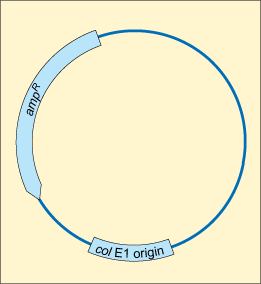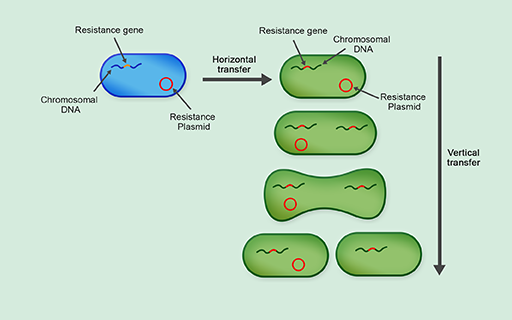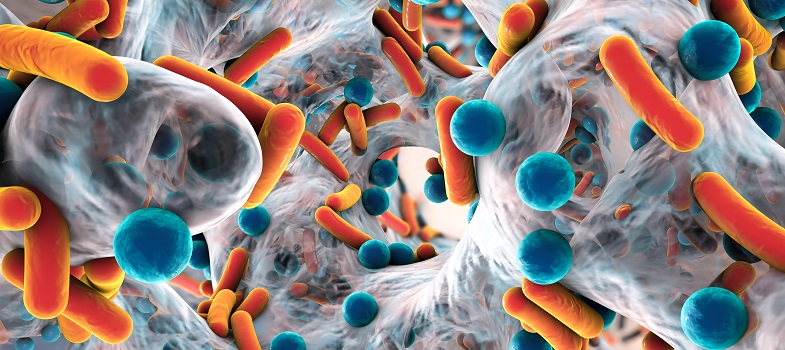3.2.1 Plasmids
You have seen how chromosomal DNA can be copied and transmitted to the next generation via vertical gene transfer. Unlike humans and other animals, bacteria contain additional, non-chromosomal DNA which can be replicated independently of the genomic chromosomal DNA. These non-chromosomal genetic elements are called plasmids.
A plasmid is a small, circular piece of DNA that often carries genes associated with a specific function: for example, antibiotic resistance (Figure 23).

Figure 23 A simple plasmid containing one antibiotic resistance gene (ampR) and an origin of replication (colE1 origin); where DNA replication begins when the plasmid is replicated.
Show description|Hide descriptionThis figure shows a schematic representation of a simple plasmid. The plasmid is represented as a blue circle. There are several blue arrows and boxes on the circle labelled ampR, colE1 origin, MCS and lacZ. There is a marker labelled BamHI, EcoRI pointing to the box labelled MCS.
Plasmids are often transferred by horizontal gene transfer. This is the process of transferring genetic information between two unrelated cells. In contrast to vertical gene transmission, where plasmids are transferred from parents to daughter cells, it does not require binary fission and can occur between bacteria of the same generation, and even between bacteria of different species (Figure 24).

Figure 24 The differences between horizontal and vertical gene transmission.
Show description|Hide descriptionThis figure is a schematic representation of the differences between horizontal and vertical gene transmission. On the left of the figure is a blue oval representing a bacterial cell. This cell contains a blue wavy line labelled chromosomal DNA and a red circle labelled resistance plasmid. On the blue wavy line there is a small orange region labelled resistance gene. There is an arrow going from the blue bacterial cell to a green oval representing another bacterial cell. The arrow is labelled horizontal transfer. The green cell contains a green wavy line labelled chromosomal DNA and a red circle labelled resistance plasmid. On the green wavy line there is a small red region labelled resistance gene. Below this cell is another cell which is identical except that the chromosomal DNA is duplicated. The image below this is of an elongated, squashed green cell containing two copies of the chromosomal DNA and one resistance plasmid. The final image is of two green cells. One cell contains only chromosomal DNA, the other cell contains chromosomal DNA and the resistance plasmid. There is a vertical arrow running from the first green cell at the top to the two green cells at the bottom. It is labelled vertical transfer.
Can you suggest why horizontal gene transfer is the primary mechanism of spreading antibiotic resistance?
Horizontal gene transfer allows plasmids carrying antibiotic resistance genes to spread rapidly between different types of bacteria. This means that species of bacteria that are susceptible to a given antibiotic rapidly acquire resistance genes, making them resistant to treatment with that antibiotic.
There are three mechanisms of horizontal gene transfer:
- conjugation
- transformation
- transduction.
You will now look at each mechanism in more detail.





